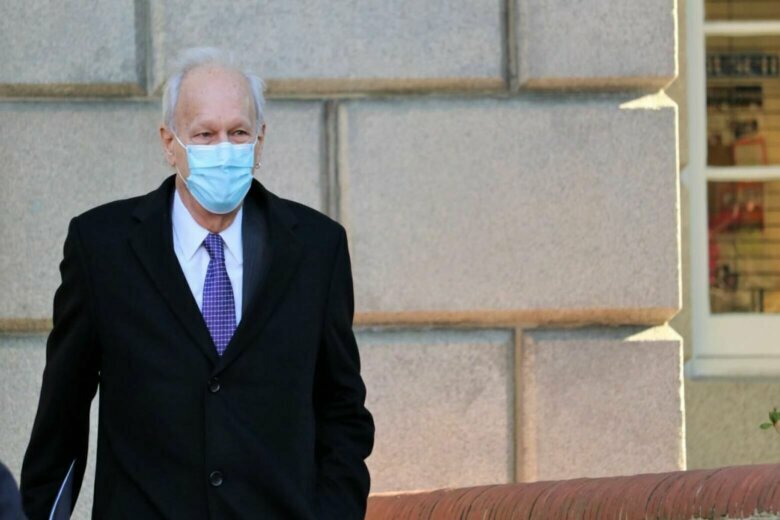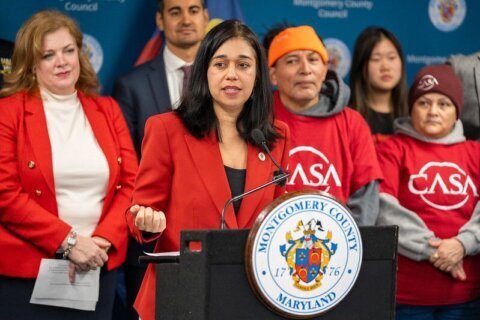This article was republished with permission from WTOP’s news partners at Maryland Matters. Sign up for Maryland Matters’ free email subscription today.

This content was republished with permission from WTOP’s news partners at Maryland Matters. Sign up for Maryland Matters’ free email subscription today.
The Maryland Senate began preliminary discussions Friday on a sweeping climate action plan that calls for net-zero statewide greenhouse gas emissions by 2045.
The Climate Solutions Now Act of 2021 aims to curtail Maryland’s global-warming pollution to 60% below 2006 levels by within the next decade by planting 5 million trees by 2030, electrifying the state government’s vehicle fleet and constructing more energy efficient school buildings, among other efforts.
After extensively reviewing the bill in four voting sessions last month, the Senate Education, Health and Environmental Affairs Committee tacked on seven amendments for Senate consideration.
“Climate change is affecting the whole state, the whole nation, the whole world,” Sen. Paul Pinsky (D-Prince George’s), the lead sponsor of the bill, said on the Senate floor Friday. “Maryland is considered probably the third most vulnerable because of our shoreline, both the Atlantic Ocean and the Bay.”
Sen. Robert G. Cassilly (R-Harford) opined that he was apprehensive of “omnibus plans to address complex issues,” especially one that requires advanced scientific knowledge, and asked if a commission could look into the topic before enacting anything into law.
But there is already one — the Maryland Commission on Climate Change, which includes Pinsky, appointees from governor’s administration and representatives from environmental groups. The commission advises the governor and General Assembly on ways to mitigate the impacts of climate change, but their recommendations have fallen short of the urgency needed to confront the climate emergency, Pinsky said. The commission’s most recent plan called for 50% reduction in greenhouse gas emissions by 2030.
In addition, the Maryland Department of the Environment released a climate action plan over a year late.
This sweeping climate action bill is a way to fill that gap, Pinsky said.
The measure also includes a sunset provision in 2025, which means lawmakers can in four years assess whether the reduction targets are too fast or too slow and alter them accordingly.
When the original 2009 Greenhouse Gas Reduction Act Plan was due for a sunset in 2016, the legislature realized a more aggressive plan was necessary and increased reduction goals from reducing emissions by 25% by 2020 to reducing emissions by 40% by 2030
Legislative analysts say it is difficult to calculate the overall costs of the bill’s far-reaching proposals to change government agencies and functions in a more environmentally way.
A part of Pinsky’s bill requires at least one of the next five schools built in each jurisdiction to meet net-zero energy requirements, through energy efficiency measures, solar panels or geothermal energy. A loan fund would be available to pay for upfront costs. However, any schools that are not built to meet net-zero energy must be ready to add solar panels at a later date.
Sen. Katherine A. Klausmeier (D-Baltimore County) asked for a stricter mandate — that all newly constructed schools be built to be net neutral. Although Pinsky endorsed the idea, he said he wanted to set a reasonable goal for every county and allay concerns about the upfront costs of building energy efficient schools.
“The hope was at least every county would have one show piece to show that it can be done and it can save money,” Pinsky said.
There are already three net-zero school buildings in Maryland: Wilde Lake Middle School in Howard County, which was completed in 2017, and Graceland Park/O’Donnell Heights Middle School and Holabird Academy in Baltimore City, which opened this school year.
“At the end of the day, these are going to be savings,” Pinsky said.
Pinsky’s bill would require no more than $20 million from the Strategic Energy Investment Fund to help pay for replacing the state fleet with electric cars and for school buildings to become carbon neutral or solar ready. For planting trees, $15 million from the Bay Restoration Fund annually and $1.25 million from the Chesapeake Bay Trust Fund would be mandated.
The House Environment Subcommittee began working on the House cross-file on Wednesday.
Senate President Bill Ferguson (D-Baltimore City) said at a press conference Friday he was looking forward to seeing climate bills on the floor, which he expects to be “fiercely debated next week.”
“It’s the slow burning existential crisis in our midst. It’s the thing Maryland needs to be a leader on,” he said.
eshwe@marylandmatters.org








